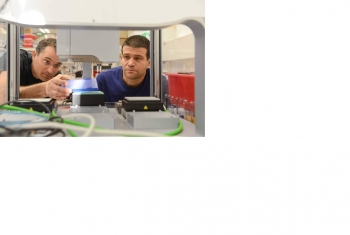Dr. Liran Shlush,of the Department of Immunology, combines single cell technologies, advanced sequencing technologies, and stem cell biology while trying to understand what triggers the evolution of leukemia in its earliest stages, in order to advance early diagnosis and treatment of this disease.
One recent study by Dr. Shlush aims to define novel concepts in somatic evolution. Cancer is the end product of somatic evolution, where cells acquire mutations over time and change their phenotypes. While classic evolution is focused on genetic changes to DNA, Dr. Shlush hypothesized that in the short period of leukemia evolution, the mutation rates are too low to account for the massive phenotypic diversity. Accordingly, Dr. Shlush and his team are exploring the epigenome and RNA as evolutionary units. For the first time, they have evidence that mature, old red blood cells (RBC) include RNA, despite not having a nucleus or DNA. Their RNA could be stable, replicated from an RNA template, or absorbed from the environment. In any case, these findings suggest that RNA can serve as an evolutionary unit that can shape somatic evolution. They are also studying, in collaboration with the lab of Prof. Amos Tanay in the Department of Computer Science and Applied Mathematics, the rate of epigenetic mutations in these cells to see whether changes in methylation can shape somatic evolution in preleukemic cells.






